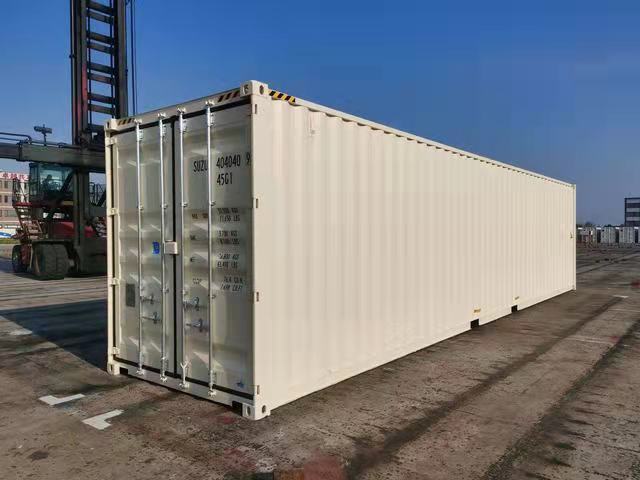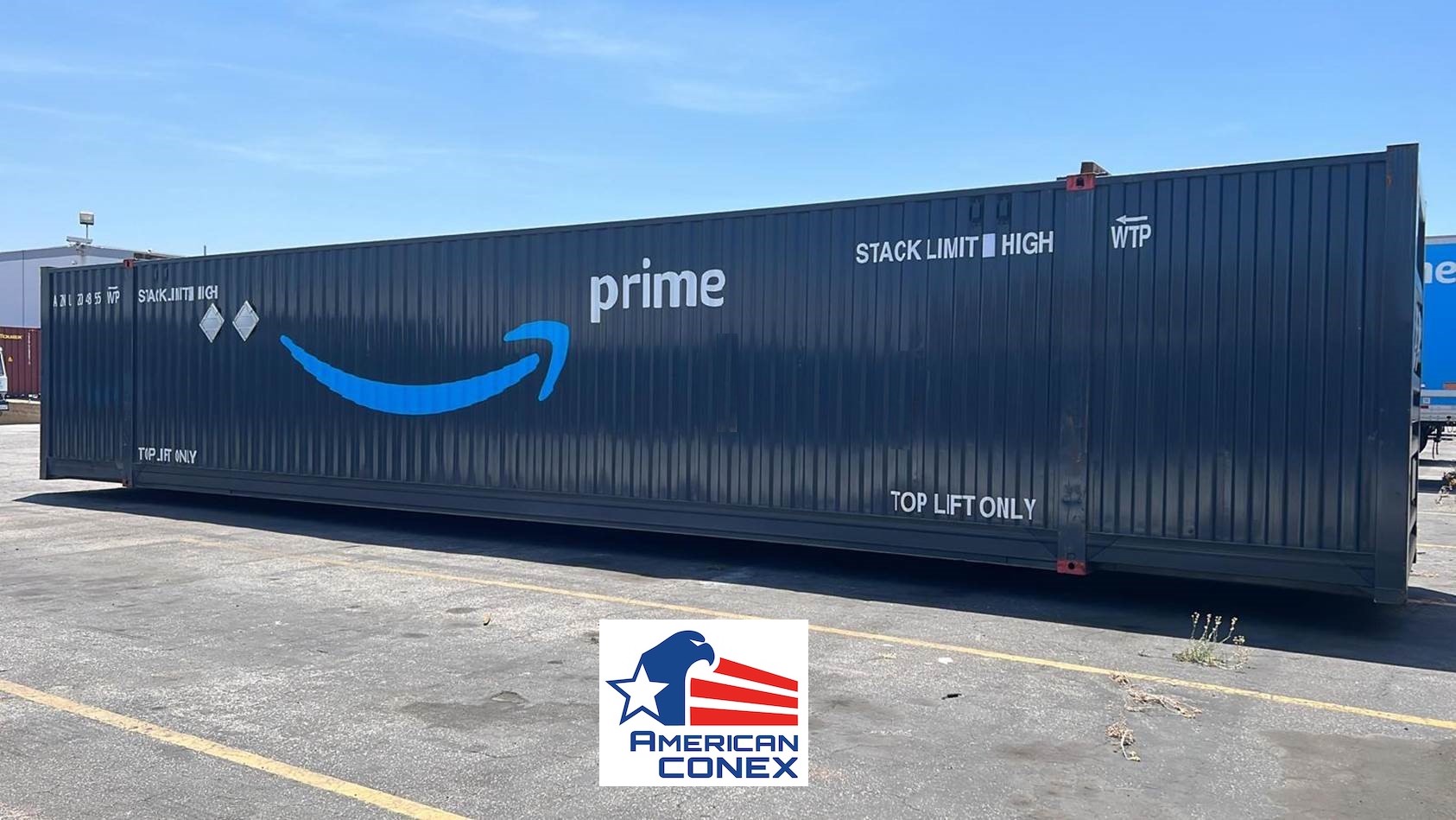Why You Should Buy New Shipping Container 40 x 8 x 9.6 for Custom Modular Designs
Why You Should Buy New Shipping Container 40 x 8 x 9.6 for Custom Modular Designs
Blog Article
The Ultimate Guide to Choosing the Right Shipping Container for Your Needs
When it pertains to selecting the best delivery container, comprehending your specific requirements is necessary. You'll desire to consider aspects like dimension, type, and material to assure you make the very best selection. From basic dimensions to specialized choices, there's a great deal to discover. And also, budgeting for both the container and any modifications can make a huge distinction. Allow's damage down the crucial aspects to help you locate the excellent suitable for your demands.
Comprehending Delivery Container Sizes
When you're selecting a delivery container, comprehending the different dimensions available is essential for making the appropriate choice. Shipping containers commonly come in typical sizes of 20 and 40 feet, however you'll also find other measurements. Knowing the dimension you require relies on what you plan to shop or transport.If you're relocating smaller sized things, a 20-foot container could be ideal, while bigger shipments frequently need a 40-foot container. Maintain in mind that the height can also vary; high dice containers use extra upright space, which can be advantageous for taller goods - Buy New Shipping Container 40' x 8' x 9’6".Before deciding, determine your cargo, and take into consideration how much room you'll require for filling and unloading. Constantly consider possible future demands-- selecting a slightly bigger container may save you inconvenience down the line. Ultimately, choosing the best dimension will certainly enhance performance and guarantee your products are secure throughout transportation
Sorts Of Shipping Containers Available
There are a number of sorts of shipping containers readily available, each designed for details purposes and freight needs. The common dry container is versatile, ideal for basic freight. If you're delivering perishable items, consider a cooled container, which keeps a controlled temperature level. For oversized products, high dice containers provide added height, suiting taller loads.If you need to transfer heavy equipment or devices, flat shelf containers supply a strong base without wall surfaces. Open-top containers enable for easy loading of high freight, with a removable tarp covering for protection. If you're looking for adaptability, take into consideration a retractable container that can be easily kept when not in use.Lastly, specialized containers like storage tank containers are used for liquids, while vented containers are made for bulk cargo that needs ventilation. Recognizing your cargo type will certainly help you choose the right container to satisfy your delivery needs successfully.
Material Factors To Consider for Longevity
When selecting a delivery container, the material plays a vital duty in its resilience. You'll desire to weigh the advantages of steel versus light weight aluminum, especially regarding rust resistance. Recognizing these elements can aid you make an extra enlightened selection for your delivery needs.
Steel vs. Light weight aluminum Containers
Exactly how do you choose between steel and light weight aluminum containers for your shipping requires? Beginning by thinking about resilience. Steel containers are durable and offer superb strength, making them excellent for hefty tons and harsh conditions. They resist damages from impacts and are frequently cheaper, which can be a major aspect for budget-conscious buyers.On the other hand, light weight aluminum containers are light-weight, which can save you on shipping expenses. They're less complicated to steer and are a wonderful selection if you need to transfer goods frequently. However, aluminum is generally much more pricey and less robust than steel. Evaluate your certain demands meticulously, consisting of weight, price, and the kind of cargo you'll be delivery, to make the ideal selection for your circumstance.
Deterioration Resistance Variables
Picking the right product doesn't simply entail weight and price; rust resistance plays a considerable duty in toughness. When choosing a shipping container, consider the setting it'll deal with. Steel containers, while strong, can corrosion if not effectively treated. Try to find options with safety coatings or galvanization to improve their life expectancy. Aluminum, on the other hand, supplies natural corrosion resistance, making it optimal for coastal areas or moist conditions. Nevertheless, it can be a lot more costly. Furthermore, examine the container's usage-- if it'll be revealed to chemicals or severe weather condition, focus on products that can stand up to these problems. Buying a corrosion-resistant container now can save you from pricey repair work or substitutes down the line. Select wisely for long-lasting benefits.
Alterations and Modification Options
Shipping containers aren't just for delivering goods; they can be transformed to meet your certain requirements through various adjustments and personalization choices. You can convert a standard container into a comfortable workplace, a short-term retail shop, or even a personal fitness center. The opportunities are nearly endless.Think concerning adding windows, insulation, or ventilation to improve comfort. You may also think about electrical circuitry, plumbing, or perhaps customized shelving to improve performance. If safety and security's a concern, enhanced locks can supply peace of mind.For aesthetic charm, you can repaint the container or add an one-of-a-kind style to make it stand apart. Don't ignore flooring alternatives-- whether you want durable plywood or something much more advanced, it can raise the space.Ultimately, tailoring your delivery container to suit your demands can enhance use and develop a special atmosphere that shows your design.
Examining Your Transport Needs
When it involves using your customized shipping container, understanding your transportation needs is key. Start by identifying what you'll be delivery-- whether it's hefty equipment, retail items, or personal products. Each type of freight has various demands pertaining to size, weight, and accessibility.Next, think about the range and setting of transport. Are you delivering in your area, nationally, or globally? This impacts the container's design and capability. If you're utilizing trucks, assure your container fits basic dimensions for simple loading and unloading.Additionally, think of transit problems. Will your products need special security from weather or temperature changes? If so, you might require insulation or ventilation attributes in your container.Lastly, assess exactly how usually you'll be transferring items. Constant shipments may need an extra resilient and functional container to fulfill ongoing demands. By dealing with these elements, you'll be well-prepared to select the best delivery container for your needs.
Budgeting for Your Delivery Container
Establishing a budget for your delivery container is essential for guaranteeing a smooth acquiring procedure. Determine just how much you can afford to spend. Bear in mind that prices can differ substantially based on dimension, problem, and type. New containers commonly set you back extra, but used ones can supply considerable savings.Next, consider any kind of additional prices you may incur, such as transport fees, shipment charges, and alterations. If you look at these guys intend to personalize the container, consider those expenses too. Study different vendors to compare costs and locate the very best bargain that fulfills New Shipping Container 40' x 8' x 9’6" your needs.Don' t forget to consist of any licenses or laws that might use to your acquisition and usage of the container. By plainly describing your budget, you'll be much better prepared to make educated choices, ensuring you obtain the best container without breaking the financial institution.
Maintenance and Take Care Of Long life
To assure your delivery container lasts for many years, routine upkeep is key. Beginning by checking the outside for rust, damages, and damage. If you find any problems, resolve them promptly to protect against further deterioration. Clean the container occasionally, both in and out, to get rid of dust, particles, and wetness that can lead to corrosion.Ensure the doors secure properly and lube the joints to avoid rust and sticking. If you're using the container for storage, take into consideration adding ventilation to minimize moisture and mold growth. For added protection, apply a rust-inhibiting paint or sealant annually.If your container's situated in a harsh environment, like coastal locations, you could require to raise upkeep frequency. Keep an eye on the floor covering, also; any type of signs of wear must be fixed today. With these basic actions, you'll expand the life of your delivery container significantly.
Frequently Asked Inquiries
How Do I Find a Reliable Shipping Container Distributor?
To discover a trusted shipping container provider, begin by investigating on-line evaluations, requesting referrals from friends or market get in touches with, and comparing rates. Always inspect their review qualifications and warranty they supply top quality containers that satisfy your needs.

Can I Rental Fee a Shipping Container Rather Than Buying?
Yes, you can absolutely rent out a delivery container as opposed to acquiring one. Lots of distributors provide rental alternatives, which can conserve you cash and provide versatility if you only need it for a brief period.
What Permits Are Required for Container Positioning?

Are Delivery Containers Weatherproof and Suitable for Outdoor Storage Space?
Yes, shipping containers are generally weatherproof, designed to endure rough problems. Their durable building and construction maintains your items protected and dry, making them suitable for outdoor storage. Just ensure appropriate air flow to avoid wetness accumulation inside.
Just how Do I Transfer a Shipping Container Once Bought?

Report this page